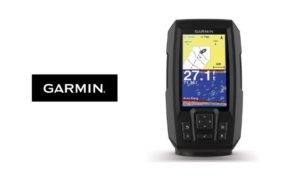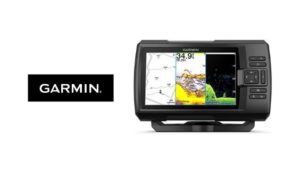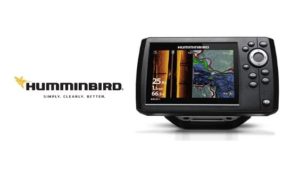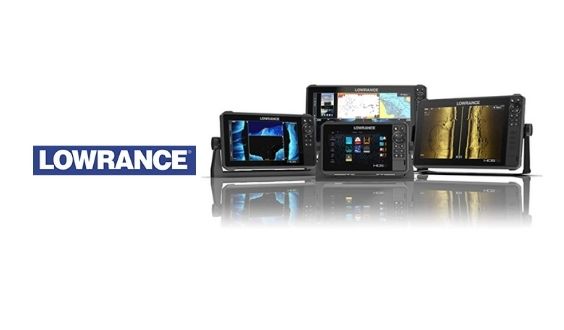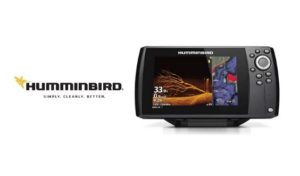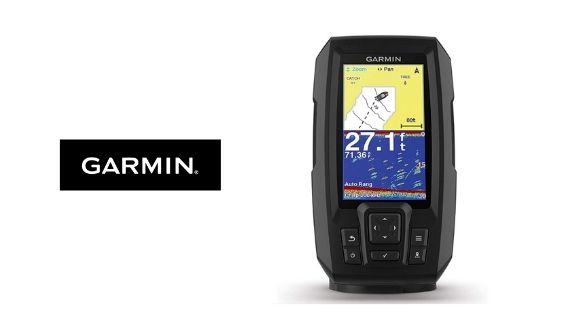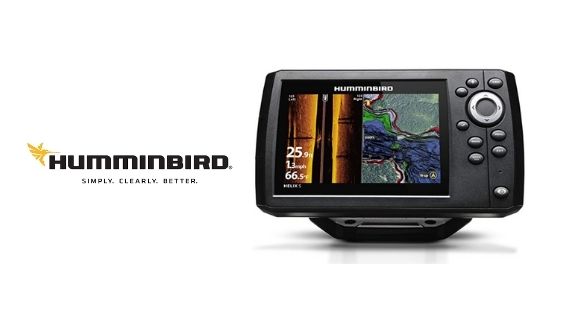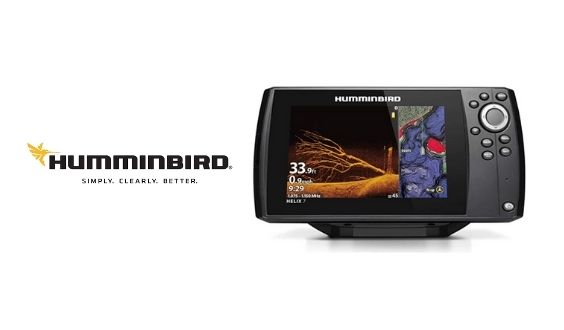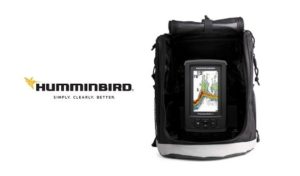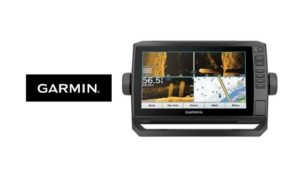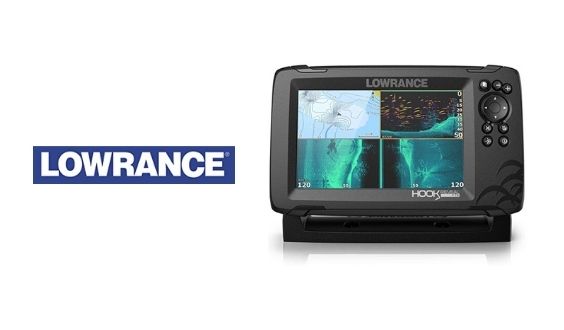Best Fish Finder 2022 – Unbiased Reviews & Buyers Guide
Hottest Picks
We purchase every product we review with our own funds — we never accept anything from product manufacturers.
Models Considered
Hours Researched
Experts Interviewed
Consumers Consulted

When you feel like it is time to graduate from beginner-level equipment to one that is appropriate for skilled anglers, then consider the Garmin Striker Vivid 7cv. While still a good choice for those just starting out with fishing, it may not be a worthwhile investment as some features can only be appreciated and used by experienced anglers. With that said though, there is an innate intuitive quality that lends to how great this fish finder is.
If you want a simple to use model that is both affordable and effective, then look no further. The built-in features include a quickdraw contour mapping function and GPS among others. All the information presented can clearly be seen on the clear display.
Humminbird’s Helix 5 is a very popular model on the market these days. This is mainly due to the powerful useful features and the accuracy of the information. All of these and more are within this unit’s compact and portable frame.
The HDS Live Series is one of the best in the Lowrance inventory. It is one of those units that are great for the experienced anglers. From sonar types, increased processing power, and the analysis and mapping of the area, the HDS-9 Live has improved its game and proves very useful to anglers.
The interesting aspect of the HELIX 7 is all the interesting features rolled up into a simpler fish finder. It is affordable but powerful. It has multiple sonar capabilities and also is capable of revealing much of what is underwater. This gives anglers a clearer picture of where you are fishing, and an improved chance of catching the fish you want to.
- Built-in GPS
- Intuitive to use
- Split-screen app views
- ClearVu sonar
- Affordable
- Sturdy and waterproof
- High definition imaging
- Portable
- Multiple sonar types
- Accurate readings
- Up-to-date Lowrance technologies
- Intuitive and user-friendly
- Comprehensive fishing tool
- Accurate GPS
- Clear chart-plotting
- Multiple ways to view data
- Does not have charts
- Lacks versatility without an NMEA port
- No networking features
- Expensive
- Expensive
- Requires connection for software updates
- Mechanical buttons
- No bluetooth
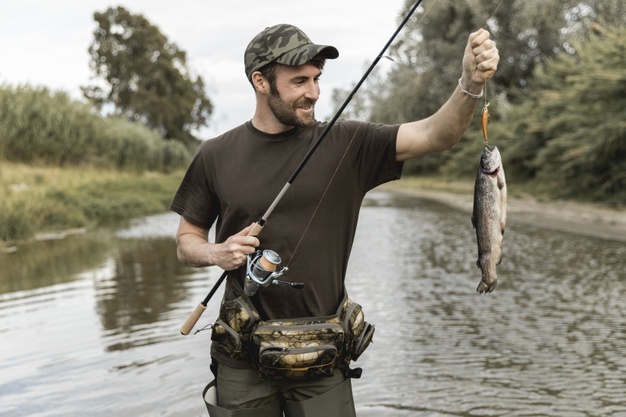
FishingLab spends thousands of hours researching, analyzing, and testing products to recommend the best picks for most consumers. We only make money if you purchase a product through our links, and we never accept free products from manufacturers
Introduction
The invention of the fish finder is a technological blessing for all anglers. It increases the ability to locate the target fish, catch more fish, and turn the fishing experience into an enjoyable one.
After extensive testing, we have decided that the Deeper Smart Sonar CHIRP outperforms the Deeper Smart Sonar Pro+. That’s why this list of fish finders is an update.
Want to increase your fishing haul? Here we have reviewed various products to give you the best fish finders available on the market.
To help you in researching for the best fish locator options, here we have reviewed the best models available and made our top fish finder choices.
Overview of the Best Brands
Lowrance
The biggest innovation this company has brought on the market is the introduction of the HD multifunction screen. In fact, they always adapt to new trends, imaging techniques like side-imaging and down-imaging. Many fish finders and sonar units are their products. They have become leaders in marine technology since their foundation.
They have added side-imaging and down-imaging as features to the CHIRP sonars. Their long list of fish finders saw adaptations with new imaging and technology. This trend went on with the introduction of some characteristics such as the Trackback. This feature serves to review picture-like sonar readings and 4G radar connections.
If you want to learn more about Lowrance fish finders, considered these reviews that we made:
Humminbird
We are once again talking about a pioneer company. The features they used for the first time are 360-degree sonar technology, modern LCD screens, and the waterproof depth sounder.
Although they still produce units for fishing, their product line has expanded to innovative features. Some of them are side-imaging, down-imaging, and huge 15-inch HD displays. They have done excellent work in the marine technology industry since 1971.
If you want to learn more, check out our Humminbird Fish Finder Reviews.
If you want to learn more about Humminbird fish finders, here is a list of related reviews we made:
Humminbird 541
Humminbird 595 c
Humminbird Helix 5 SI GPS
Humminbird Helix 7 DI GPS
Humminbird Helix 7 SI
Garmin
They are the pioneers and current leaders in the promotion of GPS technologies. Different from their competition, they became a top class in the commitment to fish finders and similar products.
This company promotes fewer products, but their quality is always on the top. Their fish finders are the most exceptional and universal on the market and that is what brought them on our list. Their products with GPS units work for outdoor, aviation, marine, and automotive needs.
If you want to read more about Garmin fish finders, here are some of our related reviews:
Garmin Fish Finder Reviews
Garmin Striker 7SV Review
Garmin Striker 5DV Review
Garmin Striker 551DV
Garmin Striker 151DV
Raymarine
A world leader in high performance marine electronics for boating and light marine markets. Their products are made to deliver the very best in visual navigation information and with a legacy of marine navigation technology spanning over 80 years, Raymarine products are renowned today for their ease-of-use, rugged design, and reliability.
Their comprehensive range of marine electronics for both recreational boating and light commercial marine applications are available through a global network of dealers and distributors. Some of the best products they have for fishermen:
Overall Features And Ease Of Use
Generally speaking, all these companies bring us similar features. Dedicated GPS units, multi-panel displays, side-imaging, down-scanning, etc. can be a part of any bait. Yet, we would like to break this down for you to give you a much clearer vision of what to expect from which product.
Lowrance is a company bringing features that depend on the series and the size of the model. Its advanced models have brighter screens, quicker GPS, and stronger imaging for greater depths. All their fish finders have buttons while larger ones have touchscreens. Smaller units have DownView and Chirp, while the larger one has SideView as well.
Garmin is a company that will offer a very accurate inbuilt GPS which allows drawing your own maps. Although this one relies on waypoints and custom maps, it will bring you from point A to point B. Its smaller entities have both CHIRP and ClearVu, which is a type of down-imaging.
Hummingbird has products that reach amazing depths visualizing vegetation, objects, and everything around your boat. You will get Ethernet, Wi-Fi, and many more connections with it.
All their models offer intuitive control as the imaging is crystal clear. The differences generally come with the series they are offering. Their Solix models have both touch and physical buttons, while Helix models have only physical buttons. Down and side imaging is present on almost every one of their models.
9 Best Fish Finders
Bottom Line
PROS
- Built-in GPS
- Intuitive to use
- Split-screen app views
- ClearVu sonar
CONS
- Does not have charts
Summary
If you feel ready to use and invest in the next level of equipment, the Garmin Striker Vivid 7cv is a great choice. The built-in GPS is helpful, and while it doesn’t have GPS circuits, it is still as useful and effective. Discover and map out your location while also mapping out the points of interest that you can easily return to.
The sonar used here is CHIRP technology. While most units emit pulses to look for fish, the CHIRP technology sweeps across several frequencies. This sweeping gets more useful data that the anglers can utilize. Apart from the sweeps, this also helps build a clearer picture of what is underwater, allowing anglers to target specific structures.
It also has a very clear display to glean out the useful pieces of information. Have no fears when taking this unit out on the water because it can handle a small amount of water splashing onto it.
Key Highlights
- 36×6 inch display
- IPX7 water-resistance
- Split-screen zoom capability
- CHIRP and ClearVu sonar
- Ultrascroll mode
Conclusion
All in all, the Garmin Striker Vivid 7cv is a powerful and next level fish finding tool that has many useful features. Definitely one of the best in the market today.
Bottom Line
PROS
- Affordable
- Sturdy and waterproof
- High definition imaging
CONS
- Lacks versatility without an NMEA port
Summary
The Garmin Striker 4’s functions are definitely noteworthy. The fact that it is not one of the more costly ones allows all of the functionalities to shine through.
The display is a comfortable viewing size for anglers. The transducer within the unit includes CHIRP sonar that yields high definition images. In addition, the high resolution allows anglers to pick out the right crucial details.
Anglers can also store maps and return to important points of interest. Contour maps are created fast and can be recorded easily. The built-in GPS also helps with this, but it is extremely useful for creating routes at sea.
Key Highlights
- Dual frequency CHIRP
- Built-in GPS
- Multiple sonar attributes
Conclusion
The Garmin Striker 4 is a great all-around unit with many useful functionalities and features, but without the large price tag. It is a modern day hi-tech unit that many anglers can undoubtedly gain some value from.
Bottom Line
PROS
- Portable
- Multiple sonar types
- Accurate readings
CONS
- No networking features
- Expensive
Summary
The HELIX 5 is a fantastic portable unit. The fact that it was manufactured by Humminbird only adds to how useful and great it is. However, it extends to more than just the company’s name.
The portability means it is a great choice when fishing on canoes or kayaks, but the various powerful features allow it to be used on many more occasions.
The powerful sonar and GPS capabilities add so much value in any angler’s hands. It also provides very accurate and clear information that only adds to how useful it is.
Key Highlights
- 5” display
- High resolution colors
- Side and down imaging sonar
- Built-in transducer
Conclusion
One of the biggest reasons to purchase the HELIX 5 is the fact that you get all these powerful features at a lessened cost. They include the down and side sonar imaging, the great high-resolution display, and the fact that its waterproof quality allows anglers to bring it around comfortably.
Bottom Line
PROS
- Up-to-date Lowrance technologies
- Intuitive and user-friendly
- Comprehensive fishing tool
CONS
- Expensive
- Requires connection for software updates
Summary
The HDS Live is one of the best finders in Lowrance’s repertoire. It is a considerable upgrade in fish finding technology.
The fact that you can view several modules on the display screen means that anglers can review multiple pieces and feeds of information at any given time. For example, anglers can place multiple sonar readings on-screen, the weather conditions, as well as other readings. If you put this together with the high-res screen resolution, anglers can see useful information at a glance.
Key Highlights
- 9 inch screen with 1280×720 resolution
- Active Imaging 3-in-1 sonar
- FishReveal feature
Conclusion
The HDS Live is one of the latest models from long-time manufacturer Lowrance. It is a comprehensive fish finding tool that has good live sonar, several screen sizes to choose from, and network accessibility just to name a few. Whatever anglers want to do, the HDS Live can be an effective tool.
Bottom Line
PROS
- Accurate GPS
- Clear chart-plotting
- Multiple ways to view data
CONS
- Mechanical buttons
- No bluetooth
Summary
Whatever skill level you are at, the HELIX 7 is a great unit to choose and consider. It has all the features that you would want for finding fish out on the waters. It includes multiple quality sonar capabilities, accurate navigation, and multiple modes to read and display information.
The SwitchFire sonar mode is a feature that allows anglers to customize how they want their sonar information displayed. Anglers can select clear mode that keeps the screen clean and clear from any clutter. On the other hand, the max mode gives more information on fish, the environment, and water currents.
Key Highlights
- Built-in GPS and chart plotting function
- Side and down imaging sonar
- SwitchFire sonar mode
Conclusion
The HELIX 7 is a great all-around unit that anglers with any level of skill and experience can utilize. It has everything you would want and need, making catching fish easier and more enjoyable for anglers.
Bottom Line
PROS
- Dual-beam sonar
- Comes with a carry case
- Easy to use
- Good depth coverage
CONS
- Upgrades are hard to come by
- No circular flash or down imaging
Summary
For all intents and purposes, the PIRANHAMAX 4 PT is a simple and easy to use unit. It has standard sonar capabilities and a dual beam transducer. You can bring all of these great features with the carry case it comes with.
It bears mentioning that it does not come with any navigation features. The good news is that this brings down the price quite a bit. In place of this though, there are a slew of other features that include fish ID, fish alarms, and whiteline among others.
Key Highlights
- Dual beam sonar
- Can reach depths of 600 feet
- Portable and easy to use
Conclusion
The PIRANHAMAX 4 PT is a great, easy to use, and portable unit. While its features are standard, the fact that it is affordable means that it can get the job done. One of the other noteworthy features is the fact that it can reach an impressive depth of 600 feet.
Bottom Line
PROS
- High resolution (800×480) 9” WVGA screen
- Advanced charting features
- Internal 5Hz GPS
- Easy mounting, the cable ports are included on the mount
- Impressive 3-in-1 sonar functionalities
CONS
- Relatively expensive
- LakeVu lake mapping sold separately
Summary
It has a Bluechart G2 mapping chart. You can add your own maps via microSD. For the finder functionality, it offers a transducer for advanced side imaging features. You get clear imaging of what’s near your vessel.
Key Highlights
- 9” High-Resolution Screen
- 3-In-1 Transducer
- Advanced Chartplotter features
Conclusion
Great if you want a big screen and the advanced chart plotting GPS features. Considered one of the best finder-GPS combos.
Bottom Line
PROS
- Stores on SD cards
- Easy to transfer waypoints and tracks
- Very accurate
- Simple setup
- Has GPS
CONS
- Relatively expensive
Summary
You can always see what is passing below and beside your boat. The built-in Wi-Fi can pair with the ActiveCaptain app. It will provide notifications, access to Quickdraw Contours Community data, etc.
Key Highlights
- Garmin Quickdraw Contours
- ActiveCaptain App
- Clear Scanning Sonar Images
Conclusion
Gives a clear image of what is below even on the brightest days. You can navigate to any feature you need and be ready for everything you may catch.
Bottom Line
PROS
- 7 inch screen for better viewing
- Useful functions and features
- Autotuning sonar
- Pre-loaded with C-Map charts and maps
CONS
- Screen cover not included
- Variety of functions may take time for mastery
Summary
The Lowrance Hook Reveal 7 has a variety of functions and features that make it very helpful for any and all anglers. The triple transducer makes finding fish quick and clear.
Key Highlights
- 7” screen display
- Tripleshot Transducer
- Automatic sonar tuning
- Variety of maps and charts installed
Conclusion
It may require some time to master, but with enough patience and effort, it becomes an effective and convenient tool for catching fish.
How A Fish Finder Operates
A fish finder has one core feature – to locate the fish, enhancing your fishing experience by allowing you to catch more fish. It has two parts: a display screen and a transducer.
- Display screen – you can mount it on a board or carry it around. The purpose of the display unit is to display the information you need.
- Transducer – with two main functionalities: emitting high-frequency sound waves by converting electrical into sound energy, and receiving back the reflection and converting it into electrical data.
Different Types of Fish Finders
Mountable Fish Finder
Consists of a mountable transducer and display unit. Depending on the mounting type, you can attach the fish finder to the boat temporarily or permanently.
Portable Fish Finder
With this type, you get a small display unit and a portable transducer with temporary mounts. This type often operates on batteries.
Read more about portable fish finders here: Portable Fish Finders.
Wireless Fish Finder
- A new type consisting of a floating, wireless transducer that transmits data to your smartphone via mobile data or Wi-Fi.
What Is A Good Price For A Fish Finder?
Important Considerations When Choosing a Fish Finder
Transducer
The transducer is an essential element for any fish finder – a device converting energy from one form to another. It converts electrical energy into sonar waves, and vice versa. Three factors are most important: mount type (also dictating material), cone angle, and frequency.
Transducer Cone Angle
It is the width of the sound wave emitted into the water for your boat. The wider the cone, the larger the covered area. The deeper the sound wave goes down, the lower the intensity projected back to the transducer. Less accuracy produces image distortions.
Transducer Frequency
It refers to the frequency of the sound wave emitted by the transducer. The higher the frequency, the wider the cone angle. If you want to fish in shallow waters, higher frequencies are better as lower frequencies are better for deep waters.
CHIRP Sonar and CHIRP Transducers
CHIRP (Compressed High-Intensity Radiated Pulse) is the most sophisticated sonar technology today. Standard sonar sends 1 frequency at a time. If you want two different frequencies, you will need two different transducers.
Read more about sonar fish finders here: Best Sonar Fish Finder.
Display Unit
Often, choosing a display is like choosing an underwater fishing camera. It’s also important to consider some technical factors like how well it presents the data. Another really important feature is the resolution of the screen.
Screen Resolution
Screen resolution refers to how many pixels a screen will display. The more pixels, the more details, and the smoother image.
Scanning/Imaging Methods
Side-imaging fish finder allows scanning wider areas and seeing schools in great detail. Yet, the side-scan sonar won’t produce effective imaging in deep waters. This is where a down-imaging sonar comes in. It uses a single transducer emitting a powerful sound wave and is better for monitoring deep water.
Portable VS Mounted
It’s true that a portable fish finder that is comparable to a fixed fish finder will offer less quality. So, it’s best to focus on the main feature – portability. If you use the fish finder for smaller boats or kayaking, then the portable is a better choice.
A fixed/mounted finder is better if you want advanced technology. They are more stable, reliable, and a better choice for high-speed boats. They are more consistent and you won’t need to re-tweak the settings.
GPS Integration
We are all familiar with GPS technology nowadays. Many models also offer GPS/Chartplotter feature, which provides various benefits:
- Navionics and Charting: GPS provides easier navigation to prime fishing grounds or finding your way back to dry land.
- Water Temperature: You might find fishing spots where cold and warm waters meet. The GPS feature will help you navigate between water temperatures.
- Location Saving: You can save locations like prime fishing spots, dangerous areas, etc.
- Depth Finder: GPS models offer both mapping and charting features, so you get more accurate readings of the land.
Using a GPS—or Chartplotter—fish finder will be a different experience. Here are some tips you can use:
- Buoys: used to mark different water depths and shipping lanes on water.
- Contour Lines: These lines show you the topography below the water.
- Shipwrecks: Some GPS units can highlight shipwrecks locations on the map.
- Seabed: Some fish species hang out at specific depths, and GPS tracking will offer an accurate reading of the seabed’s layout.
If GPS is a must for your device, check out our buyer’s guide for best fish finder gps combo.
Water Resistance
If you use the fish finder on an open vessel, then water resistance will be an important factor. Check JIS or IPX ratings on the product’s specifications. An IPX rating of 4 means the device is safe from water, which won’t be enough if you are on a kayak.
FAQ
What Is A Fish Finder?
A fish finder is a device using a sonar technique to find fish location underwater. It emits high-frequency sound waves and “catches” the reflecting wave to determine depth.
What Is GPS Feature In a Fish Finder?
Some models offer GPS, and such models are chart plotter fish finders. The GPS will allow viewing the location on a map. It adds extra features like saving different locations and more accurate charting of the bottom.
What Are The Different Types of Fish Finders?
There are fish finder models based on several different factors:
- Portability
- Scanning method
- Frequency
Also, there are new technologies introduced every year that improve fish finders’ accuracy. Technologies like livescan and 3D scans improved the down-scan and side-scan methods.
How Do I Read The Fish Finder?
Here are important things to consider:
- The hard bottom in most models displays as a blue line covered by yellow
- Any objects suspended from the bottom might or might not be a fish
- A ball shape is usually a bait ball. Larger objects around the ball are usually predatory fish.
What Frequencies Are Common For Fish Finders?
Fish finder transducers operate at ultrasonic frequencies from 50kHz to above 200kHz. Some can reach above 400kHz. The higher the frequency, the more detailed the results. Yet, the higher the frequency, the less depth it can cover.
Are Fish Finders Waterproof?
Some transducers are waterproof, but some aren’t. In most applications, there’s no need for the display unit for water resistance, but there are various waterproof units available. They are useful if you are kayaking or fishing on an open vessel.
How Can I Install The Fish Finder?
Portable fish finders won’t need any physical installation. They only need software calibrations and adjustments. For mounted/fixed units, at least the transducer must be mounted on the boat, and the process will depend on the mount type.
Can We Use a Fishfinder on a Kayak?
It is pretty common since a fish finder can locate various hazards like rocks and logs, which increases the safety of your kayaking. We can mount the transducer either within the hull, over the side, or through the scupper holes.
Read more about fish finders for kayaking here: Fish Finder For Kayaking
What Is The Best Brand To Choose?
The most popular brands available today include Lowrance, Garmin, Humminbird, Deeper, and Furuno. Different brands offer different features suiting a certain fishing style.
Conclusion
Fish finders are an affordable solution to improve your haul. While there are many different types and sets of features, it’s best to figure out your needs first. The products we have reviewed above, as well as the buying guide, should help you make a better decision in buying your perfect fishfinder.
Want to read more reviews about fish finders and other exciting yet convenient and affordable fishing equipment? Check some of our other reviews to help increase your knowledge on the market:
Best Fish Finder For Small Boat
Side Imaging Fish Finder
Ice Fishing Fish Finder
Underwater Fishing Camera
We like to share product recommendations with you and hope you like them! Just to make you aware FishingLab may collect a small share of sales or other compensation from the links on this page.

We like to share product recommendations with you and hope you like them! Just to make you aware FishingLab may collect a small share of sales or other compensation from the links on this page.

